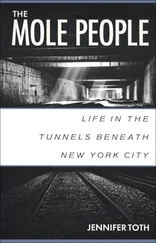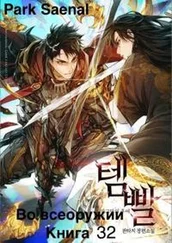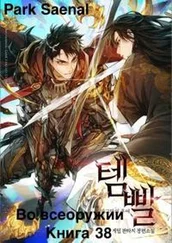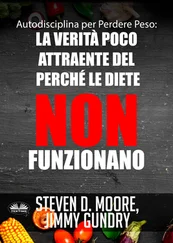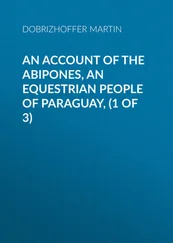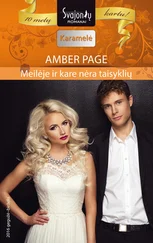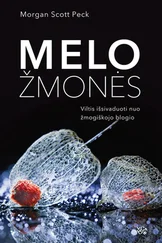Pausing only inches from the ground the helicopter’s twin tinted windows were the eyesockets in a polished white skull that tilted this way and that, regarding the crowd curiously. For a moment it seemed it might lift back up and away. Everyone watched, hands clutched hands and squeezed, hearts hoped. And at last as though satisfied the helicopter straightened and nestled between the pylons, and was still.
Two NFLM higherups scuttled out under the chopper’s thupping main rotor. The engines settled, the blades slowed from a single whirring disc into four separate propellers, and stopped. The Mayor smoothed her sash and stepped forward, cue cards poised, only to be impeded by a windbreakered arm, a freckled hand. Sorry ma’am, offered the arm’s owner, eyes downcast, lashes the colour of lard.
The helicopter sat there on the lawn, gleaming and still — was the crowd watching it, or was it watching the crowd? The feeling was of that cork-wriggling moment before the champagne pops: anticipatory and dreadful. And then the door to the cockpit flapped open and out swung the illustrationist, Raven, a brownskinned man in a white velour tracksuit, baldhead glossy in the sun.
A roar went up. The crowd hollered and thronged and the NFLM held them back. A teenager ululated ironically. Hopping down the illustrationist shook hands with each of the men on the landing pad and whispered into the ear of one, a guy in sport sandals and thick woolly socks, who signalled to his vigorously nodding, goateed colleague, and together they pulled from the helicopter a white, glassy-metallic trunk. With loping strides Raven glided along the red carpet, up the steps of the gazebo, out to the podium. The NFLM hoisted his trunk onstage and retreated.
Raven gazed over the crowd. But as he opened his mouth to speak, from the Grand Saloon clanged the old towerbells. His head sank to his chest, he tapped his fingers on the podium. The hours rang out golden: the first, bong, the second, two more, then three, and in a show of impatience Raven thrust his hand to his forehead, closed it in a fist, and the strikes stopped at eight. Instead of the usual echo and ebb, absolute silence — a tongue cleaved from a singing throat, leaving only breath and flapping lips.
Cameras lowered, everyone looked around at one another, eyebrows arching. But Raven was clutching the edges of the podium now, leaning forward, what would he do next. His fingernails were either all cuticle or painted white. His gaze dragged over the crowd as a net trawling the ocean floor. Beyond People Park there was no indication of the city: its usual hum, its growls and gurgles and honks and whispers — all absent. The island had never been so quiet. Then, with sudden violence, here was the illustrationist: eyes widening, thrusting his arms into wings.
I am Raven , he hollered.
The crowd roared in a single voice and the illustrationist bowed to them and bowed to the cameras and bowed in the general direction of the Mayor, waving her cue cards like a winner.
Ra- ven , Ra- ven , Ra- ven , chanted the crowd again, almost pleading. But he looked past them to some place beyond their expectation. He snapped, thrice and crisply. The white trunk heaved open with a groan.
Hush fell. The trunk’s insides were as dark as a coffin’s. What was hidden within?
The sun continued its slow swing upward. The lone cloud had scattered into droplets — had the illustrationist made it do so, some people wondered. Raven stared out from the podium, the brown of his face and hands, the white of his nails, the white of his tracksuit, china-white teeth bared between parted dark lips, the black of the shadows behind him, the white trunk vesselling night into the daytime. The people waited. The NFLM stood fast — ever-khaki, ever-vigilant. The cameras rolled. The Mayor coughed.
Then the illustrationist sucked in a deep breath and hurled his arms above his head: six doves erupted from the trunk. The crowd applauded, cameras followed the doves upward. Raven pointed a single finger, thumb extended, at the birds as they climbed. A gunshot cracked and the doves plummeted and thudded dully into the sodden field. But they were no longer doves: half a dozen pigeons lay there in the muck.
The crowd whispered, fell silent again.
The illustrationist looked deep into the rolling cameras, and crouching inches from his TV screen Sam watched through a fizz of static and shivered. In the illustrationist’s eyes was — what? Nothing.
His eyes are like tunnels, Sam described into the telephone. They’re just black eyes.
Contacts probably, said Adine, on the other end of the line. What a doosh.
Summoned by the illustrationist’s trembling fingertips the pigeons wobbled to life, tottered about with the wary steps of a litter just born. The crowd gasped and clapped and the cameras zoomed out and the illustrationist bowed. He snapped his fingers — once, twice, three times, the clack of bones.
He’s snapping his fingers Adine, explained Sam to his sister.
I’ve got the volume up, she said, I can hear.
You can hear.
Just tell me what you see, she said. You’re my closed captions, okay?
I’m okay Adine. I’m doing the work Adine. I’m doing good communication.
You sure are, buddy. And I appreciate it.
The crowd had gone quiet once more. It was as if a blanket were being ruffled over them, up and releasing their hoots and hollers, down and stifling them silent. A pause. Then the illustrationist flung his arms skyward, the pigeons lifted into the sky, they were white again: doves.
Sam explained to his sister what he saw.
He’s done this before, she said.
He’s done this before.
It was on TV, at some square in some city, said Adine. One of those places all covered with pigeons. He walked into the square and waved his hand and all the pigeons fell down and everyone thought they were dead and then he did something else stupid and they went flying away, all at once.
They went flying away.
Right. And then he cried a single tear off the main bridge and the rivers started flowing again after like a hundred years or something. God, I just can’t understand how anyone buys this guy. The illustrationist Raven — it’s just so affected and phony.
People like that sort of thing Adine. They like that sort of thing I guess.
People? said Adine, as though the word were a disease. People fuggin suck.
On the TV the doves vanished, the applause faded. The illustrationist peered down upon the crowd and grinned two rows of perfect white teeth from his brown face, arms still extended in the same vast V from which he had released the birds. His eyes were two wet black stones and what Sam didn’t tell Adine was that, looking into them, in his gut churned a sick, sour feeling of vinegar and rot.
Slowly, with drama, the illustrationist lowered his arms, returned his hands to the podium, curled his fingers around its edge. He leaned forward. He closed his eyes. He licked his lips.
He’s opening his eyes, said Sam.
Look out, buddy, said Adine, here we go.
I am Raven , screamed the illustrationist, and everything exploded in thunder.
 HE MINIVAN was trapped in a snarl of traffic along Topside Drive, bumper to bumper back over Guardian Bridge all the way to the mainland, cars and trucks and utility vehicles for sport and vans and other minivans too, though none as spanking fancy as this one, with its sidepanels of woodgrain appliqué. The licence plate was vain, HARRY, and into Harry’s roofrack were strapped matching black wheelie suitcases in checked and carry-on sizes, and a hot pink duffel depicting witches and fairies upon a background of castles. Inside Harry were the Pooles: Pearl and Kellogg and their kids, Elsie-Anne, five, and Gip, ten years old and, with each new roar from People Park, more dismayed and defeated to be missing it all.
HE MINIVAN was trapped in a snarl of traffic along Topside Drive, bumper to bumper back over Guardian Bridge all the way to the mainland, cars and trucks and utility vehicles for sport and vans and other minivans too, though none as spanking fancy as this one, with its sidepanels of woodgrain appliqué. The licence plate was vain, HARRY, and into Harry’s roofrack were strapped matching black wheelie suitcases in checked and carry-on sizes, and a hot pink duffel depicting witches and fairies upon a background of castles. Inside Harry were the Pooles: Pearl and Kellogg and their kids, Elsie-Anne, five, and Gip, ten years old and, with each new roar from People Park, more dismayed and defeated to be missing it all.
Читать дальше
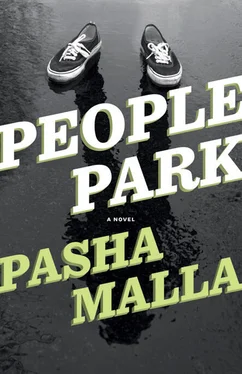
 HE MINIVAN was trapped in a snarl of traffic along Topside Drive, bumper to bumper back over Guardian Bridge all the way to the mainland, cars and trucks and utility vehicles for sport and vans and other minivans too, though none as spanking fancy as this one, with its sidepanels of woodgrain appliqué. The licence plate was vain, HARRY, and into Harry’s roofrack were strapped matching black wheelie suitcases in checked and carry-on sizes, and a hot pink duffel depicting witches and fairies upon a background of castles. Inside Harry were the Pooles: Pearl and Kellogg and their kids, Elsie-Anne, five, and Gip, ten years old and, with each new roar from People Park, more dismayed and defeated to be missing it all.
HE MINIVAN was trapped in a snarl of traffic along Topside Drive, bumper to bumper back over Guardian Bridge all the way to the mainland, cars and trucks and utility vehicles for sport and vans and other minivans too, though none as spanking fancy as this one, with its sidepanels of woodgrain appliqué. The licence plate was vain, HARRY, and into Harry’s roofrack were strapped matching black wheelie suitcases in checked and carry-on sizes, and a hot pink duffel depicting witches and fairies upon a background of castles. Inside Harry were the Pooles: Pearl and Kellogg and their kids, Elsie-Anne, five, and Gip, ten years old and, with each new roar from People Park, more dismayed and defeated to be missing it all.
